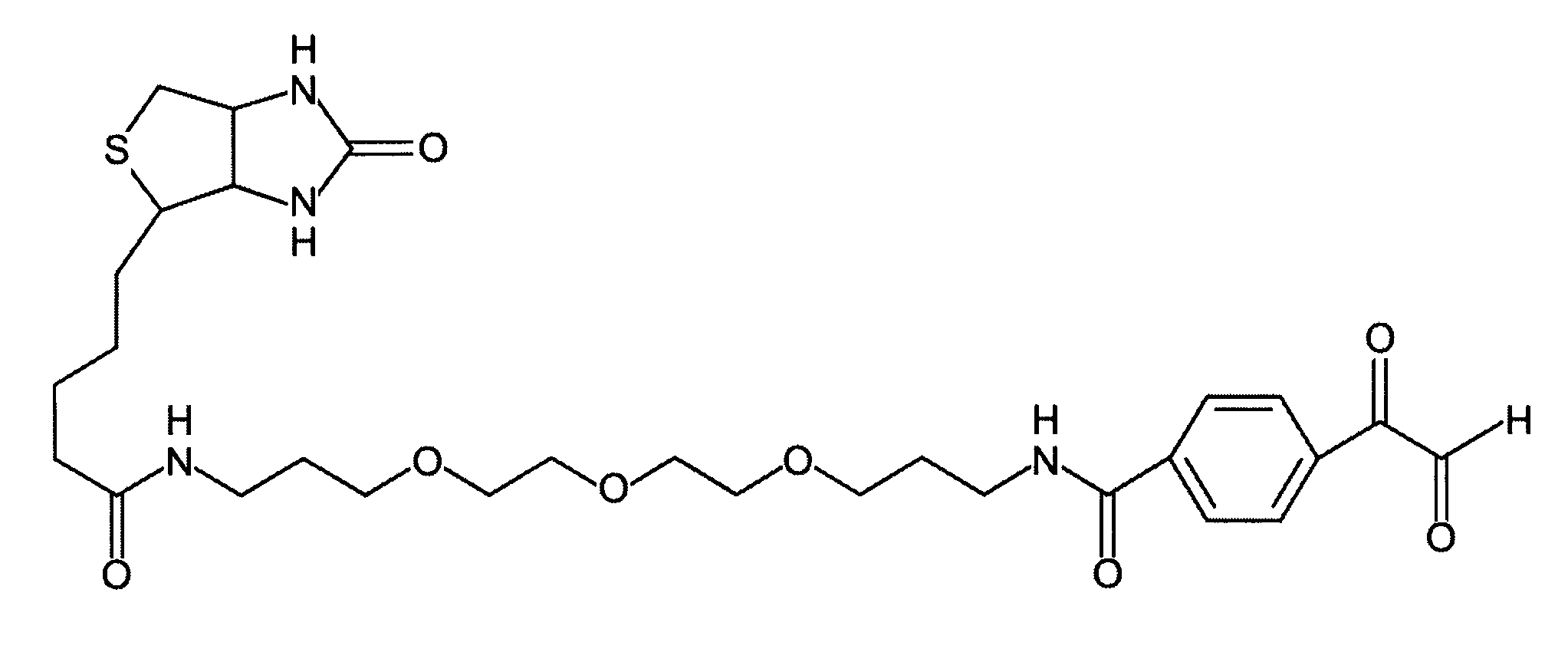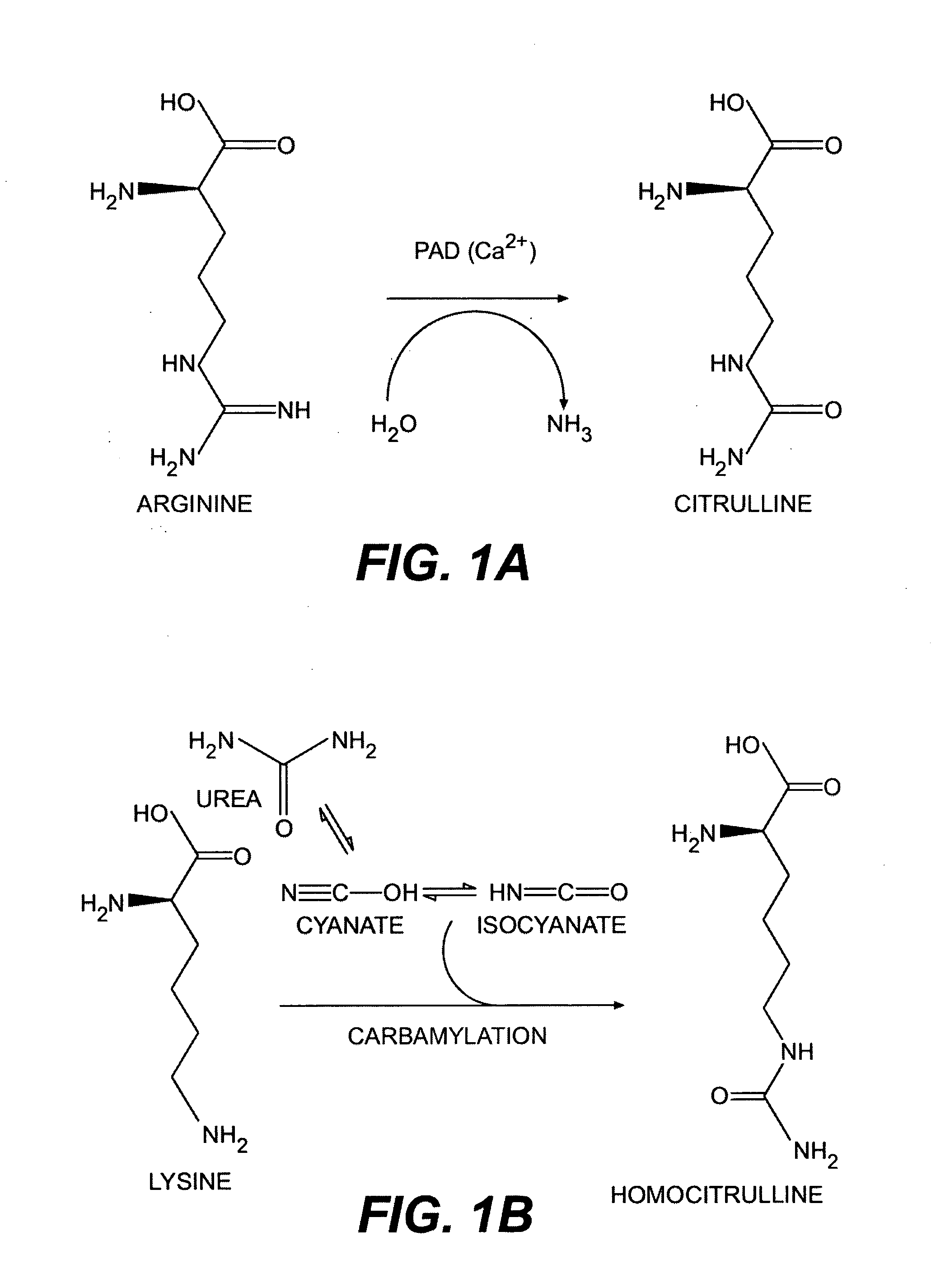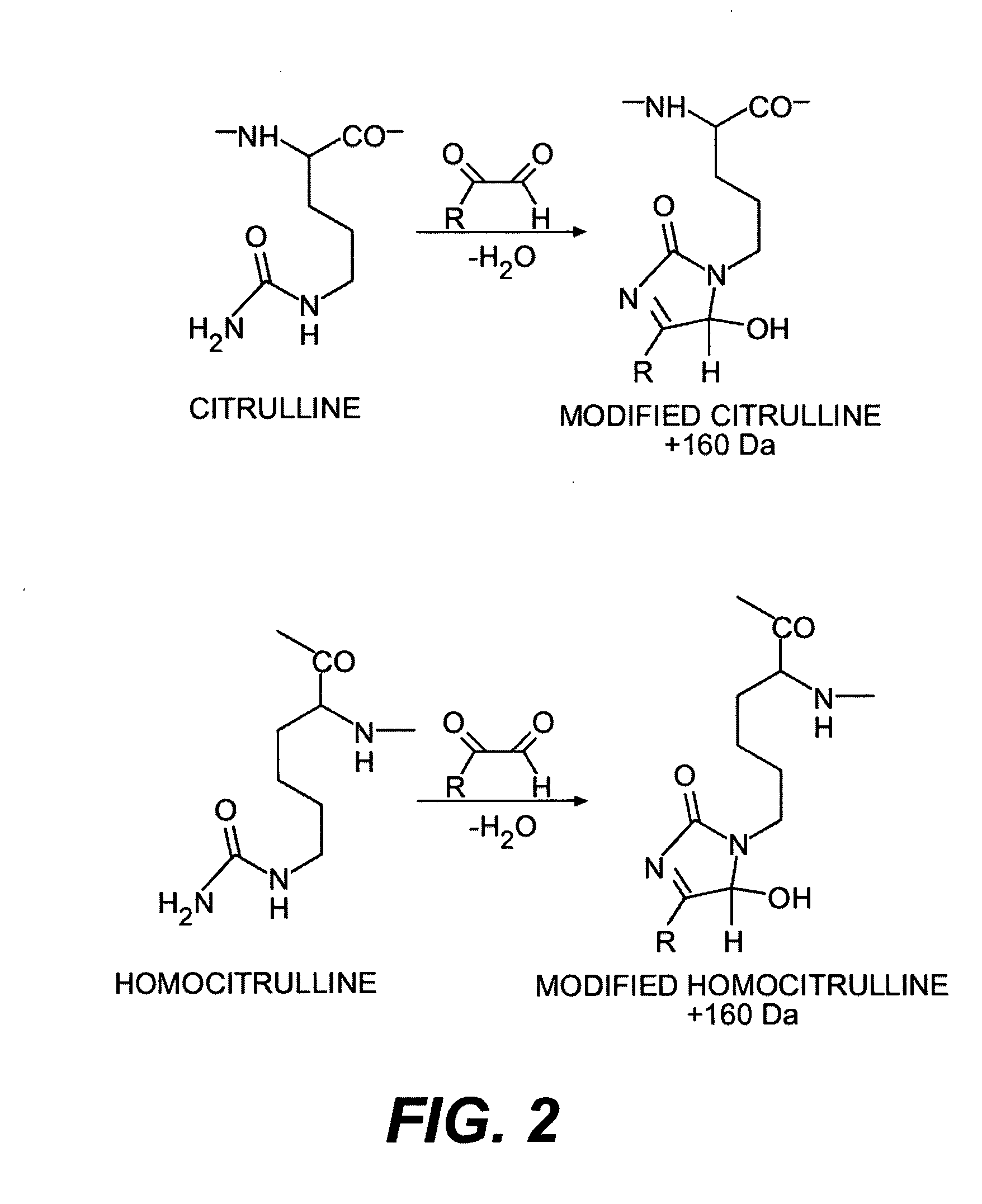Methods for modifying, isolating, detecting, visualizing, and quantifying citrullinated and/or homocitrullinated peptides, polypeptides and proteins
a technology which is applied in the field of citrullinated and/or homocitrullinated peptides, polypeptides and proteins, can solve the problems of citrullinated antigens responsible for the onset of ra that have not yet been isolated or characterized, and the cartilage and bone in the affected joints are destroyed, and achieve the effect of altering citrullination
- Summary
- Abstract
- Description
- Claims
- Application Information
AI Technical Summary
Benefits of technology
Problems solved by technology
Method used
Image
Examples
example 1
Modification of Citrulline-Containing Peptides, Polypeptides, and Proteins with Mono- and Disubstituted Glyoxal Derivatives
Modification of Citrulline Using 2,3-Butanedione and Biotin Derivatives
[0081]Solutions of 100 μM polypeptide (e.g., SAVRA-Cit-SSVPGVR) and 50 mM 2,3-butanedione were prepared in water; 50 mM solutions of various biotin derivatives, including Sulfo-NHS-LC-Biotin (Invitrogen, Carlsbad, Calif., USA), Sulfo-NHS-SS-Biotin and Sulfo-NHS-Biotin (both from Pierce, Rockford, Ill., USA), were prepared in 100% TFA. Solutions containing 2,3-butanedione were freshly prepared in dark-colored tubes prior to modification. The polypeptide modification reaction contained: 10 μL 100 μM polypeptide, 20 μL 100% TFA, 10 μL 50 mM biotin derivative and 10 μL 2,3-butanedione. The reaction was mixed in a dark-colored microcentrifuge tube and incubated at 37° C. for 3 hours. Upon completing the incubation, the reaction mixture was dried under vacuum in a Speed-Vac. The pellet was dissolve...
example 2
Enrichment of Citrullinated Polypeptides by Soluble Biotinylated Derivatives of Glyoxalbenzoic Acid
Preparation of a Biotinylated Phenylglyoxal Derivative
[0093]In order to combine the specific modification of citrulline with the enrichment of citrullinated peptides from heterogeneous mixtures, several biotinylated glyoxal derivatives will be synthesized that are not commercially available. For example, a biotin-lysine-phenylglyoxal derivative is synthesized by conventional solid phase chemistry on a robot used for solid phase peptide chemistry. First, Fmoc-Lys(Dde)-OH is coupled to 2-chlorotrityl resin. Next, the Fmoc group is deprotected and GBA is coupled to the α-amino group of lysine. Then the Dde protection group is cleaved by hydrazine, and biotin is coupled to the ε-amino group of lysine. Finally, the complete biotin-lysine-phenylglyoxal derivative is cleaved off the resin with acid and analyzed by HPLC and MS. This synthesis scheme is used to attach a large number of differen...
example 3
Enrichment of Citrullinated Polypeptides by Immobilized GBA
Preparation of Beads Carrying Immobilized GBA
[0100]GBA was coupled to TentaGel S HMB resin using 4-dimethylaminopyridine (DMAP) (purchased from Sigma-Aldrich, St. Louis, Mo.) as catalyst. The TentaGel S HMB resin carries a hydroxymethyl benzoic acid (HMB) at the surface. GBA is coupled to the HMB group by its carboxyl group. The resulting ester bond creates a base labile cleavage site between HMB and GBA. After the reaction of peptide-bound citrulline residues with the glyoxal moiety, immobilized peptides are released by applying basic conditions.
[0101]First, the beads were swelled in dimethylformamide (DMF) for 30 minutes, then washed 3× with dichloromethane (DCM) and 3× with DMF. Next, 0.7 mg (4 μmol) of GBA was coupled to 5 mg of TentaGel S HMB resin (binding capacity: 0.29 mmol / g; purchased from Rapp Polymere, Tübingen, Germany), using 8 μmol diisopropylcarbodiimide (DIC) as coupling reagent and 0.4 mol DMAP as catalyst ...
PUM
| Property | Measurement | Unit |
|---|---|---|
| temperature | aaaaa | aaaaa |
| temperature | aaaaa | aaaaa |
| temperature | aaaaa | aaaaa |
Abstract
Description
Claims
Application Information
 Login to View More
Login to View More - R&D
- Intellectual Property
- Life Sciences
- Materials
- Tech Scout
- Unparalleled Data Quality
- Higher Quality Content
- 60% Fewer Hallucinations
Browse by: Latest US Patents, China's latest patents, Technical Efficacy Thesaurus, Application Domain, Technology Topic, Popular Technical Reports.
© 2025 PatSnap. All rights reserved.Legal|Privacy policy|Modern Slavery Act Transparency Statement|Sitemap|About US| Contact US: help@patsnap.com



